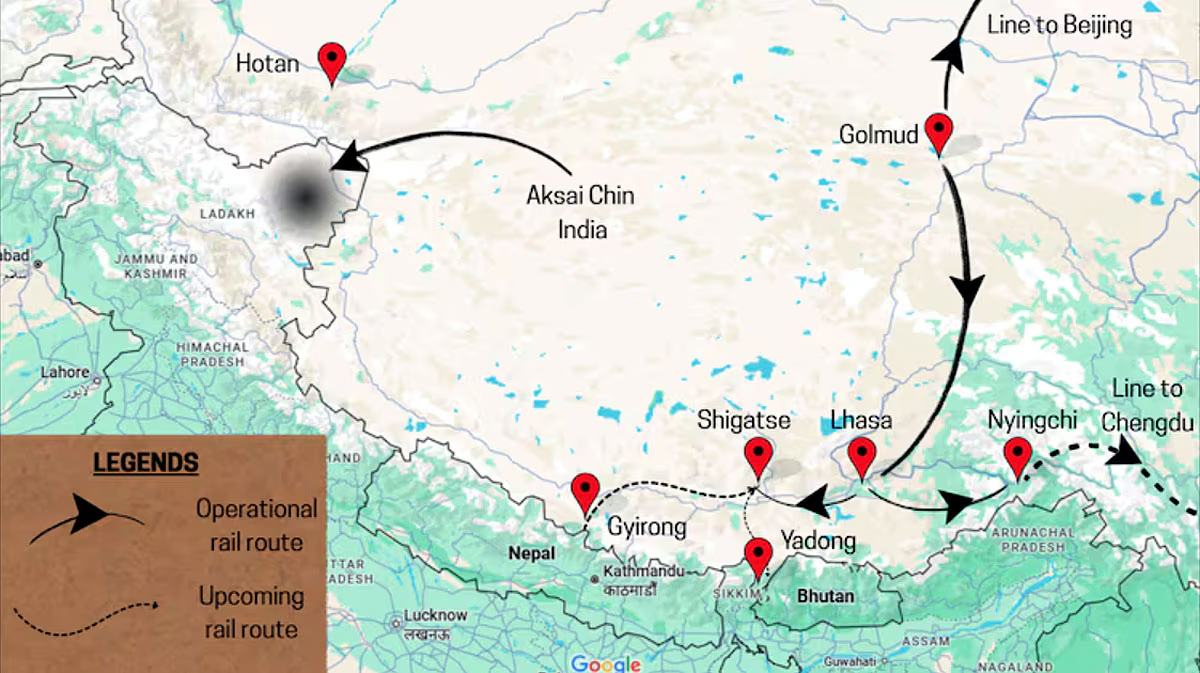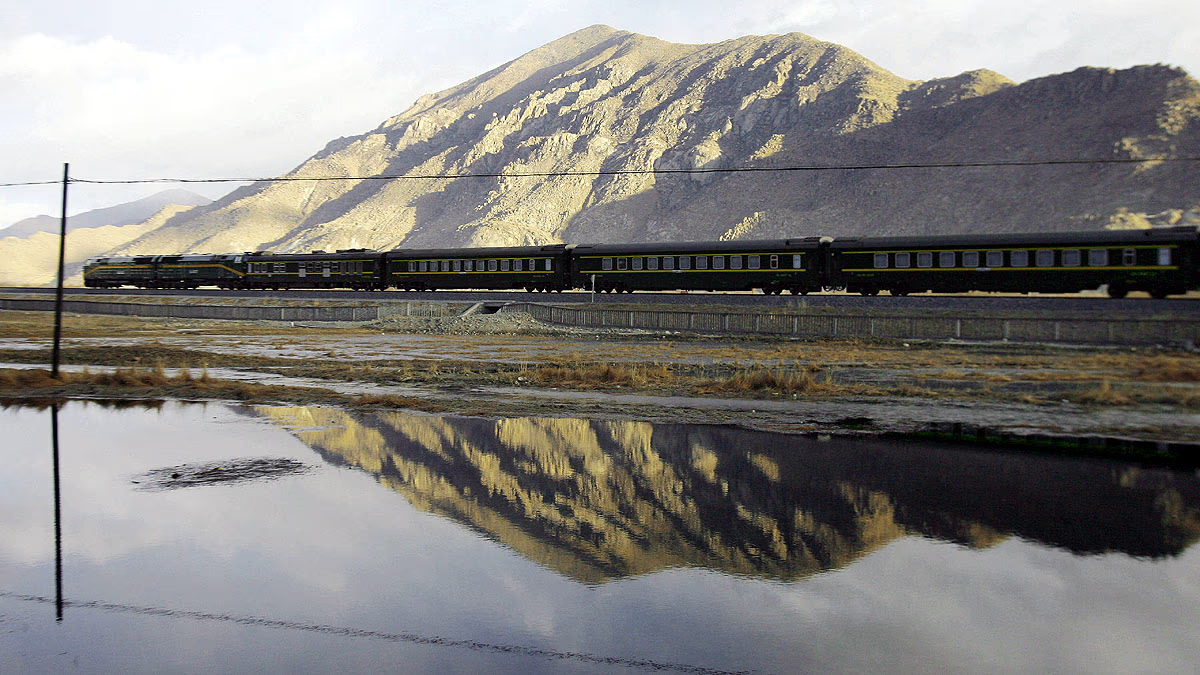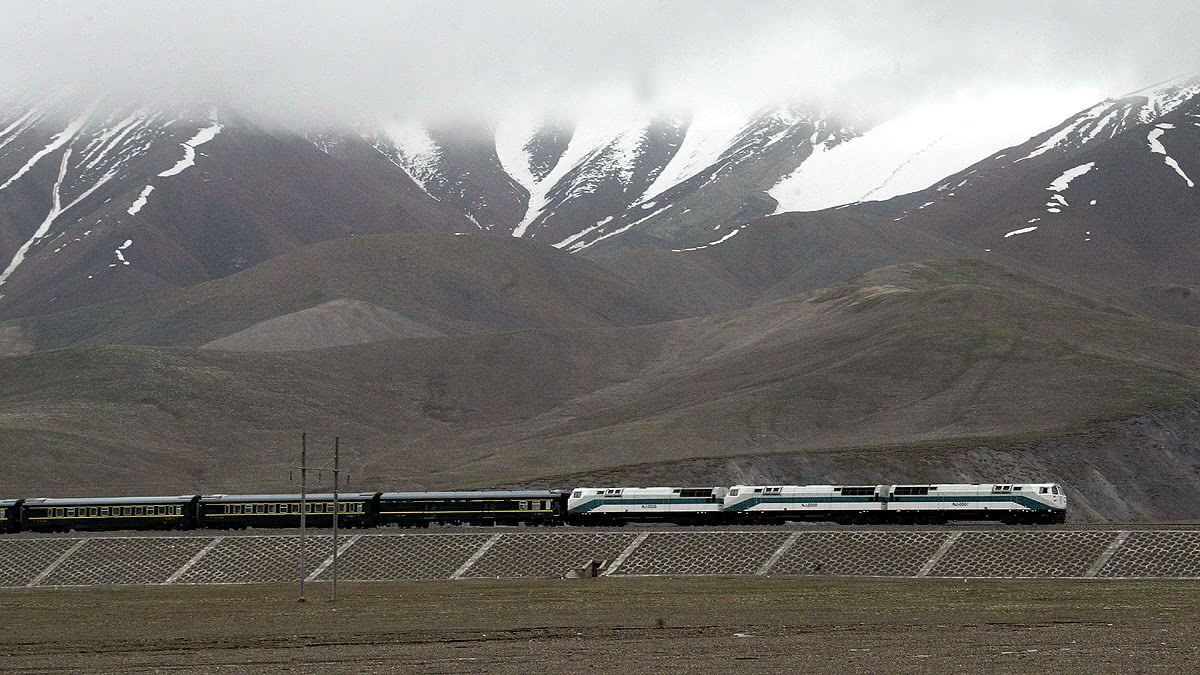China is set to embark on a significant railway project connecting Tibet to Xinjiang, running close to India’s Line of Actual Control (LAC). This rail line will extend through the Aksai Chin region, already a point of contention, and reach sensitive areas like the Chumbi Valley near Nepal's border, reminiscent of the 2017 Doklam standoff. Let's explore this project's essence, history, and why it concerns India.
The History of the Rail Project
In 2006, China first integrated Tibet into its rail network with a train running from Golmud to Lhasa at 4,000 meters altitude through permafrost, reaching speeds of 100 km/h. This marked the initial link of Tibet to China’s vast rail grid. Subsequent expansions included the Lhasa-Shigatse line in 2014 and the Lhasa-Nyingchi line in 2021. Now, China aims to deepen its rail reach, particularly near India's border.
Also Read:

Source: aajtak
The New Rail Line: Tibet-Xinjiang Connection
Since 2008, China has been crafting plans for this new rail project, now poised for execution. This line will stretch approximately 2,000 km from Hotan in Xinjiang to Lhasa in Tibet. Starting from Shigatse, it will trace North-West along Nepal's border, piercing through Aksai Chin to Hotan, Xinjiang.
The route will traverse the Kunlun, Karakoram, Kailash, and Himalayan mountain ranges, with average altitudes exceeding 4,500 meters. Challenges like glaciers, frozen rivers, and permafrost add complexity to the project.
The newly formed Xinjiang-Tibet Railway Company (XTRC), with a registered capital of 95 billion yuan (around $13.2 billion), will oversee the project. Their vision includes establishing a 5,000 km rail network centered around Lhasa by 2035.
Also Read:
India's Concerns: Dual Perspectives
The rail line ignites dual concerns for India...
Aksai Chin Dispute:
Aksai Chin is an integral part of India, yet under Chinese control since the 1950s. The construction of the Xinjiang-Tibet Highway (G219) then led to the 1962 India-China war, highlighted by diplomatic tensions when India realized its existence on Chinese maps. Now, a rail passage through the area rings alarms for India.
Border Security:
With proximity to the LAC, this rail boosts China’s capability to rapidly deploy troops and military assets, increasing border tension, especially in sensitive zones like Arunachal Pradesh and Sikkim.

Source: aajtak
Further Rail Expansion and Sensitive Areas
China plans to extend its railways from the Lhasa-Nyingchi route towards Chengdu, a major military hub, near Arunachal Pradesh's border. Additionally, the rail will reach Gyrong near the Nepal-Tibet border and Yadong County in the Chumbi Valley. The Chumbi Valley is a sensitive zone where the 2017 Doklam military standoff occurred following China's road construction.
India's Response and Preparedness
Although India has not officially responded to the rail line, it is fortifying border infrastructure to ensure it can swiftly deploy forces alongside China. Nevertheless, China's project is seen as not only ambitious but also assertive.




